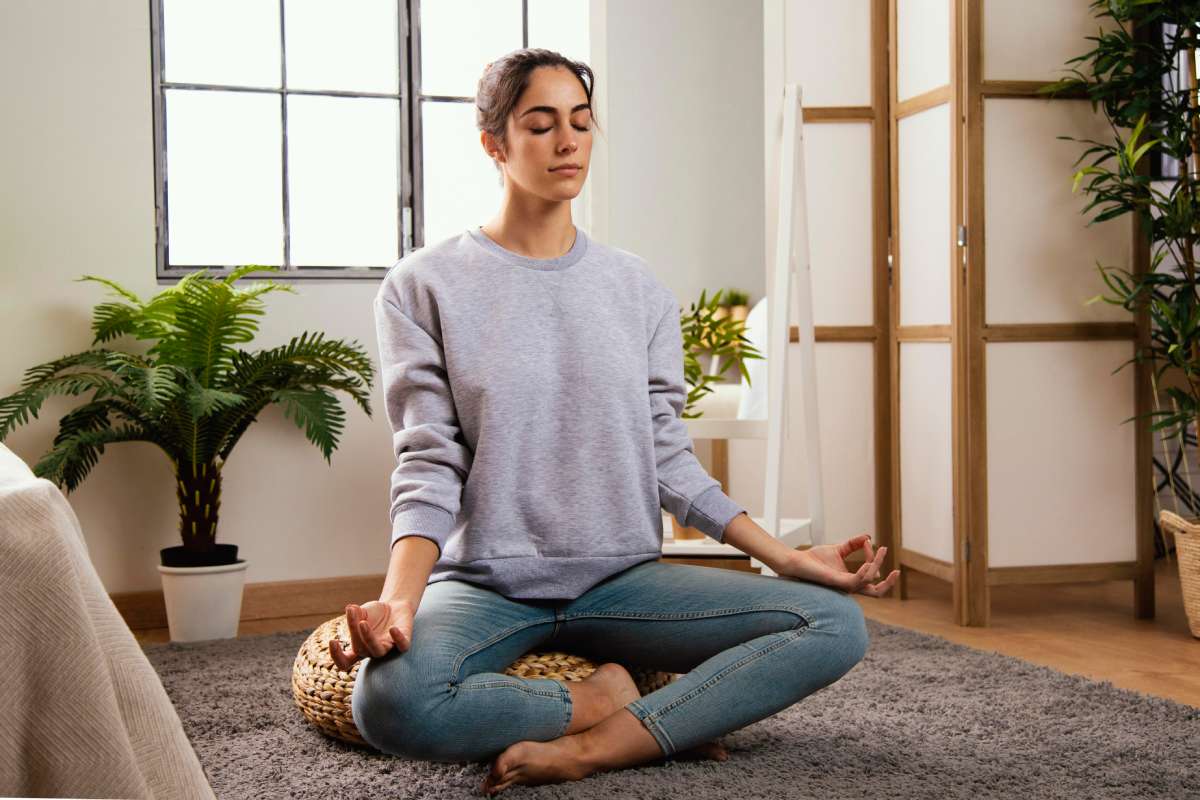Introduction to Mindfulness Exercises
What is Mindfulness?
Mindfulness is the practice of being fully present and engaged in the moment, acknowledging and accepting one’s thoughts, feelings, and bodily sensations without judgment. It encourages a heightened awareness of the present, allowing individuals to observe their experiences rather than react impulsively. This practice has its roots in ancient meditation traditions, particularly within Buddhism, but has gained popularity in modern psychology and wellness practices.
The Importance of Mindfulness in Daily Life
In our fast-paced world, where distractions are abundant and stress levels are high, mindfulness serves as a powerful tool for enhancing mental clarity, emotional resilience, and overall well-being. By incorporating mindfulness exercises into your daily routine, you can cultivate a greater sense of peace, improve your focus, and enhance your relationships.
Benefits of Practicing Mindfulness
Mental Health Benefits
Research has shown that mindfulness can significantly reduce symptoms of anxiety, depression, and stress. By fostering a non-judgmental awareness of thoughts and feelings, individuals can develop healthier coping mechanisms and reduce rumination, which is often linked to mental health disorders.
Physical Health Benefits
Mindfulness is not only beneficial for mental health; it also has positive effects on physical health. Studies indicate that mindfulness practices can lower blood pressure, improve sleep quality, and enhance immune function. By reducing stress, mindfulness can also alleviate physical symptoms associated with chronic conditions.
Types of Mindfulness Exercises
Breathing Exercises
Breathing exercises are a foundational aspect of mindfulness practice. They help anchor your attention and promote relaxation. One simple technique is the 4-7-8 Breathing Method:
- Inhale deeply through your nose for a count of 4.
- Hold your breath for a count of 7.
- Exhale slowly through your mouth for a count of 8.
- Repeat this cycle for several minutes.
Body Scan Meditation
The body scan is an effective mindfulness exercise that promotes relaxation and body awareness. Here’s how to practice it:
- Find a comfortable position, either lying down or sitting.
- Close your eyes and take a few deep breaths.
- Gradually bring your attention to different parts of your body, starting from your toes and moving up to your head.
- Notice any sensations, tension, or discomfort without judgment.
- Spend a few moments on each body part before moving on.
Mindful Walking
Mindful walking combines physical activity with mindfulness. To practice:
- Choose a quiet place where you can walk undisturbed.
- Walk slowly and focus on the sensation of your feet touching the ground.
- Pay attention to your surroundings—the sights, sounds, and smells.
- If your mind wanders, gently bring your focus back to the act of walking.
How to Get Started with Mindfulness
Setting Up Your Mindfulness Practice
To establish a successful mindfulness practice, consider the following steps:
- Choose a Quiet Space: Find a comfortable and quiet place where you can practice without interruptions.
- Set a Regular Schedule: Consistency is key. Aim to practice mindfulness at the same time each day, even if it’s just for a few minutes.
- Start Small: If you’re new to mindfulness, begin with short sessions (5-10 minutes) and gradually increase the duration as you become more comfortable.
Tips for Beginners
- Be Patient: Mindfulness is a skill that takes time to develop. Don’t be discouraged if you find it challenging at first.
- Use Guided Meditations: Consider using apps or online resources that offer guided mindfulness exercises to help you get started.
- Practice Non-Judgment: Allow thoughts and feelings to come and go without labeling them as good or bad.
Guided Mindfulness Exercises
Finding the Right Resources
There are numerous resources available for guided mindfulness exercises, including apps like Headspace, Calm, and Insight Timer. These platforms offer a variety of guided meditations, breathing exercises, and mindfulness practices tailored to different needs and preferences.
Sample Guided Exercises
- Five Senses Exercise: Take a moment to notice five things you can see, four things you can touch, three things you can hear, two things you can smell, and one thing you can taste. This exercise grounds you in the present moment.
- Loving-Kindness Meditation: Sit comfortably and close your eyes. Silently repeat phrases like “May I be happy, may I be healthy, may I be safe, may I live with ease.” After a few minutes, extend these wishes to others in your life.
Incorporating Mindfulness into Daily Activities
Mindful Eating
Mindful eating involves paying full attention to the experience of eating. To practice:
- Choose a small meal or snack.
- Take a moment to appreciate the colours, textures, and smells of the food.
- Eat slowly, savouring each bite and noticing the flavours and sensations.
Mindful Communication
Mindful communication encourages active listening and presence during conversations. To practice:
- Focus entirely on the person speaking, avoiding distractions.
- Acknowledge your own thoughts and feelings without interrupting.
- Respond thoughtfully, considering your words carefully.
Overcoming Challenges in Mindfulness Practice
Common Obstacles
Many individuals face challenges when starting a mindfulness practice, including:
- Restlessness: It’s common to feel restless or fidgety, especially during meditation. Acknowledge these feelings and gently bring your focus back to your breath.
- Distractions: External distractions can disrupt your practice. Try to create a peaceful environment, but also remember that distractions are a natural part of mindfulness.
Strategies for Success
- Set Realistic Goals: Start with achievable goals, such as practicing mindfulness for just a few minutes each day.
- Join a Group: Consider joining a mindfulness or meditation group to connect with others and stay motivated.
Mindfulness and Stress Reduction
Techniques for Managing Stress
Mindfulness is a powerful tool for managing stress. Techniques such as deep breathing, body scans, and mindful walking can help you respond to stressors more effectively. By cultivating awareness, you can observe your stress responses and choose healthier reactions.
The Role of Mindfulness in Emotional Regulation
Practising mindfulness can enhance emotional regulation by helping you recognize and accept your emotions without being overwhelmed by them. This awareness allows you to respond thoughtfully rather than react impulsively.
Advanced Mindfulness Practices
Deepening Your Practice
As you become more comfortable with mindfulness, consider exploring advanced practices such as:
- Mindfulness-Based Stress Reduction (MBSR): A structured program that combines mindfulness meditation and yoga.
- Mindfulness-Based Cognitive Therapy (MBCT): A therapeutic approach that integrates mindfulness practices with cognitive behavioural techniques.
Integrating Mindfulness into Therapy
Discuss how mindfulness can complement your therapy if you’re working with a mental health professional. Many therapists incorporate mindfulness techniques to enhance emotional awareness and coping skills.
Conclusion: Embracing Mindfulness for a Better Life
The Journey of Mindfulness
Mindfulness is a lifelong journey that can lead to profound changes in your mental, emotional, and physical well-being. By incorporating mindfulness exercises into your daily routine, you can cultivate a greater sense of peace, resilience, and connection to yourself and others.
Encouragement for Continued Practice
As you embark on your mindfulness journey, remember that consistency is key. Be patient with yourself and celebrate your progress, no matter how small. The benefits of mindfulness will unfold over time, enriching your life in countless ways.
Frequently Asked Questions
- What are some simple mindfulness exercises I can do at home?
- Breathing exercises, body scans, and mindful walking are great options to start with.
- How long should I practice mindfulness each day?
- Aim for at least 5-10 minutes daily, gradually increasing the duration as you become more comfortable.
- Can mindfulness help with anxiety and depression?
- Yes, numerous studies suggest that mindfulness can reduce symptoms of anxiety and depression.
- What is the difference between mindfulness and meditation?
- Mindfulness is a broader concept that encompasses various practices, including meditation, which is a specific technique to cultivate mindfulness.
- How do I stay focused during mindfulness exercises?
- If your mind wanders, gently bring your focus back to your breath or the present moment without judgment.
By embracing mindfulness exercises, you can transform your life, foster emotional resilience, and cultivate a deeper connection with yourself and the world around you. Start your journey today and discover the profound benefits of living mindfully!




